Have you ever wondered what makes Cocopeat so special and how it helps the agricultural sector?
Let’s take a look at one of the alternate strategies for plant growth: cocopeat. It undergoes extraction and processing, which can elevate farming techniques to new heights.
To extract cocopeats from coconut husks, nine processes must be completed, beginning with harvesting the coir and ending with refining it into the nutrient-rich substance. Cocopeat is also used in farming for a variety of purposes, from enhancing soil structure and moisture retention to fostering healthier plant development and sustainable agricultural methods.
So, whether you are an expert farmer wanting to enhance your practices or a gardener planning to cultivate a plant using cocopeat, this journey will be both enlightening and inspirational.
Cocopeat availability
Cocopeat is widely available in a variety of forms, including compacted blocks, loose material, and pre-packaged bags, making it accessible to farmers, gardeners, and horticulturists all over the world. It’s widely available at agricultural supply stores, gardening centers, and internet markets.
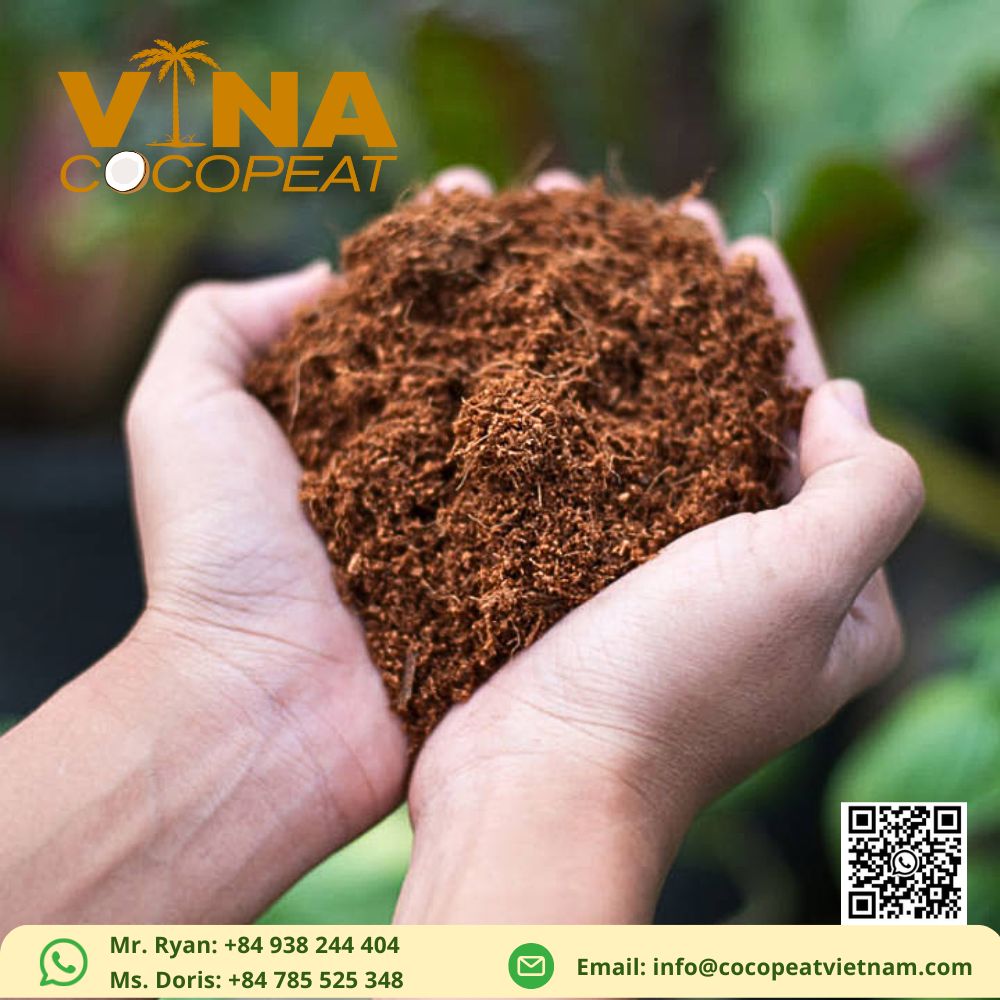
Furthermore, cocopeat manufacturing is common in areas with significant coconut agriculture, such as Southeast Asia and Vietnam, etc., assuring a consistent supply for domestic and international markets. Its appeal as a sustainable and adaptable growth medium continues to increase global availability and acceptance.
What distinguishes Cocopeat from ordinary soils?
Cocopeat is distinguished from other soils by its unique composition and properties. Cocopeat is generated from the fiber husk of coconuts, as opposed to regular soil, which is mostly made up of mineral particles. This qualifies it as an organic, renewable, and environmentally beneficial option.
One of Cocopeat’s most distinguishing characteristics is its high water retention ability. It can store up to eight times its weight in water, guaranteeing stable moisture levels in the soil and eliminating the need for regular watering. Furthermore, Cocopeat has great aeration qualities, allowing roots to obtain oxygen more effectively.
Furthermore, cocopeat is naturally pH neutral, making it an ideal setting for plant development without the need for extra nutrients. Its fibrous nature encourages vigorous root growth while preventing soil compaction, resulting in healthier plants and larger harvests.
Overall, Cocopeat’s exceptional water retention, aeration, pH neutrality, and sustainability make it a very adaptable and important substrate for farming and gardening applications.
9 Steps to Extract and Process Cocopeat
Cocopeat, generated from the fibrous husks of coconuts, has emerged as a devoted and sustainable alternative to typical agricultural soil. Its unique features, including as outstanding water retention, aeration, and pH neutrality, make it a vital resource for farmers all over the world.

Step 1: Gathering Coconut Husks
Cocopeat’s journey begins with the collection of coconut husks, which are the outer layer of coconut fruit. This stage is required to build the groundwork for the entire extraction procedure.
Coconut husks are primarily acquired by harvesting ripe coconuts from coconut palm plants. These trees often thrive in tropical locations with high temperatures and adequate rainfall, making nations such as Vietnam important providers of cocopeat production.
Step 2: Decorative Coconut Husks
Coconut husks are decorticated after harvesting, which separates the fibrous outer layer from the hard inner shell. Decorticating can be done manually or with specialist equipment.
The manual removal procedure includes trained laborers using sharp instruments to peel away the fibrous material, whereas automated methods use machines equipped with blades or rollers to achieve the same effect more efficiently.
Step 3: Retapping the Fibers
Following decortication, the fibrous husks are retted to soften the fibers and ease separation. Retting can be done in a variety of ways, including soaking the husks in water or exposing them to microbial activity.
The process of water retting involves
- Immersing the husks in water for a length of time.
- Letting natural enzymes and microorganisms degrade the lignin and pectin.
- Securing the fibers together.
Microbial retting uses specialized microbes to accelerate breakdown, which results in faster fibre separation.
Step 4: Separation of Cocopeat and Fibers
Mechanical techniques are used to separate the coconut fibers from the cocopeat after they have been retted. The retted husks are often shredded or ground into smaller bits during this process.
The shredded material is then treated again to separate the Cocopeat from the fibers. To accomplish the necessary separation, screens, sieves, or centrifuges may be used. The low-EC coco peat, which is lighter and finer in texture than the fibers, is collected and kept aside for further processing.
Step 5: Cleaning and drying Cocopeat
Following separating, the Cocopeat is washed to eliminate contaminants or residual fibres. This is required to assure the purity and quality of the finished product. To efficiently clean the Cocopeat, water or a combination of water and natural detergents are commonly used.
Cocopeat is cleaned and laid out to dry in the sun or using mechanical drying equipment. Drying is critical for lowering the moisture content of Cocopeat to an acceptable level for storage and subsequent processing.
Step 6: Sieving and Grading Cocopeat
After drying, the Cocopeat is sieved and graded to produce consistent particle size and texture. Sieving helps to eliminate any leftover contaminants or large particles, resulting in a finer, more uniform output.
Grading is done based on particle size, with different classes catering to different agricultural purposes. Finer grades of low EC coco peat are appropriate for seed starting mixes and potting soils, whilst coarser grades can be used for landscaping or erosion control.
Step 7: Buffering the pH of Cocopeat
Cocopeat naturally has a somewhat acidic pH, which may not be suitable for all plant species. As a result, buffering is frequently used to return the pH of the Cocopeat to a more neutral state.
This is accomplished by immersing the Cocopeat in a solution that contains calcium carbonate or other pH-adjusting chemicals. Buffering contributes to a more balanced growth environment for plants and supports adequate nutrient absorption.
Step 8: Sterilization of Cocopeat
Sterilization is a critical stage in cocopeat processing because it eliminates any dangerous pathogens, weed seeds, or pests in the substrate. This is especially crucial for preserving plant health and reducing disease transmission in agricultural contexts.
Steam treatment, heat pasteurization, and chemical treatments are all examples of sterilization techniques. These methods successfully destroy any undesired microbes or organisms, guaranteeing that Cocopeat is suitable for agricultural usage.
Step 9: Packaging & Distribution
The final stage in cocopeat processing is to package the sterilized and graded Cocopeat for delivery to end customers. Cocopeat is often packed in compacted blocks, bales, or bags for easy handling and transportation.
Packaging materials might differ based on the intended market and use, with alternatives ranging from plastic bags to biodegradable packaging. Cocopeat is now available for distribution to farmers, gardeners, nurseries, and agricultural wholesalers across the world.
Applications of Cocopeat in Agriculture
Now that we’ve gone over the numerous stages involved in cocopeat extraction and processing, let’s look at its various applications in agriculture:
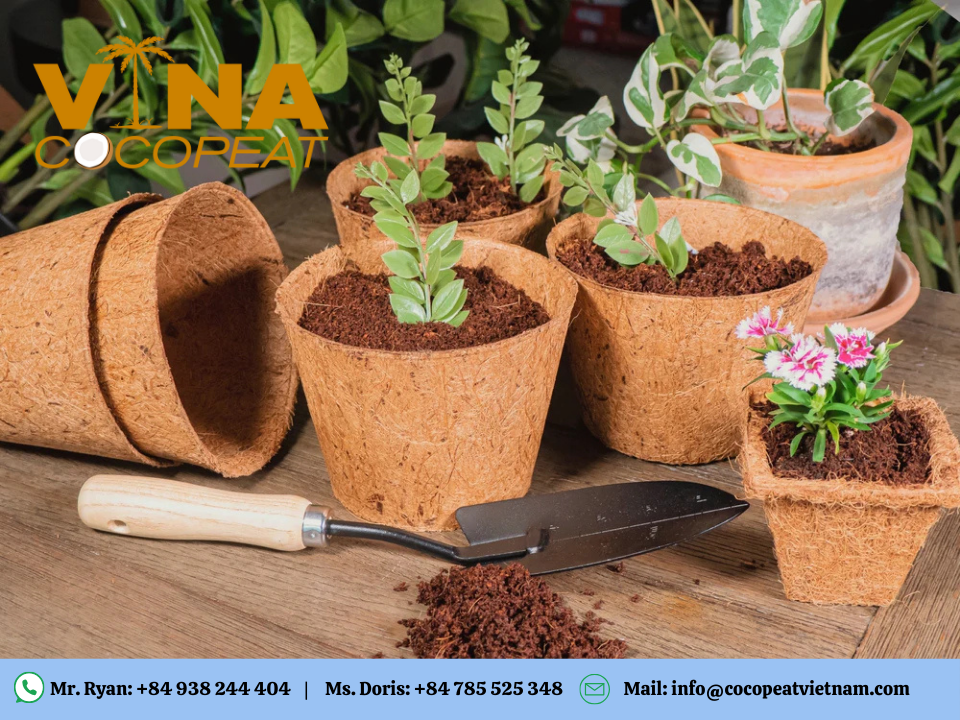
- Soil Improvement
- Seed Starting Mixes
- Potting Soils
- Hydroponic Growing Media
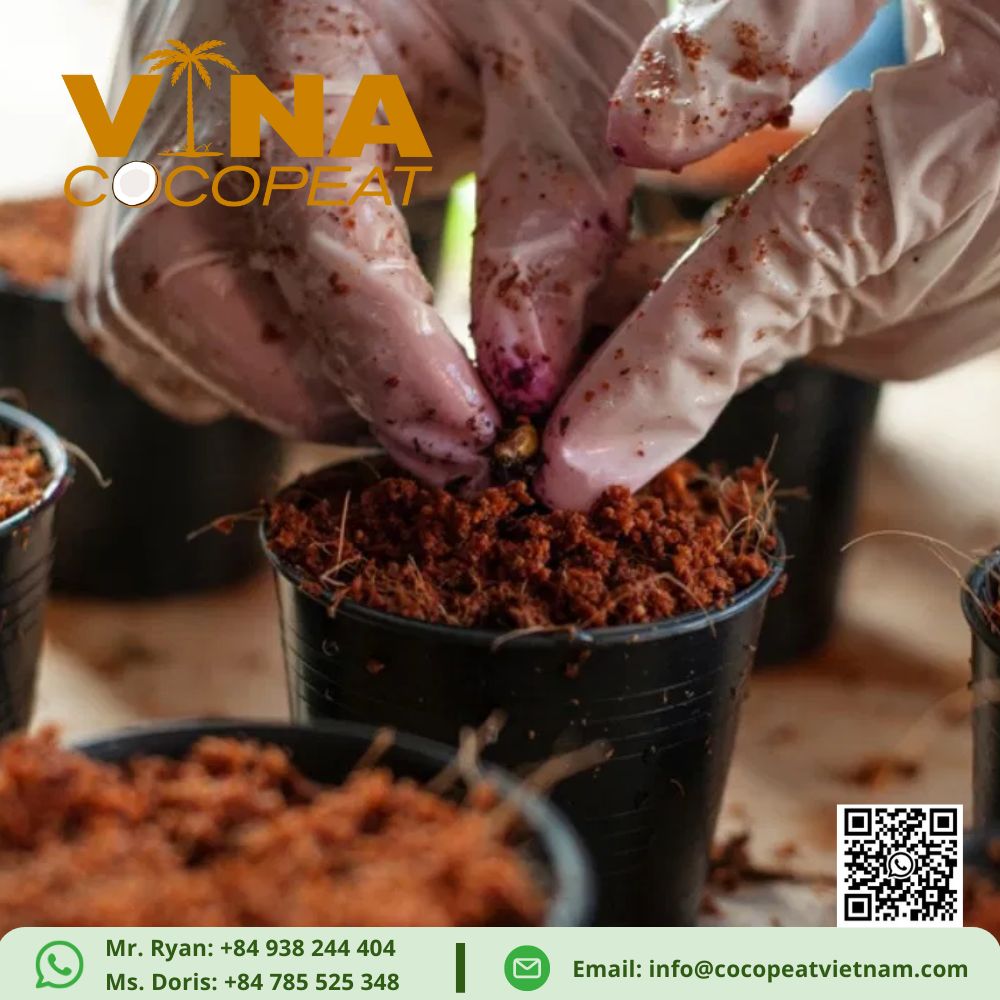
- Mulching
- Soilless Agriculture
- Livestock Bedding
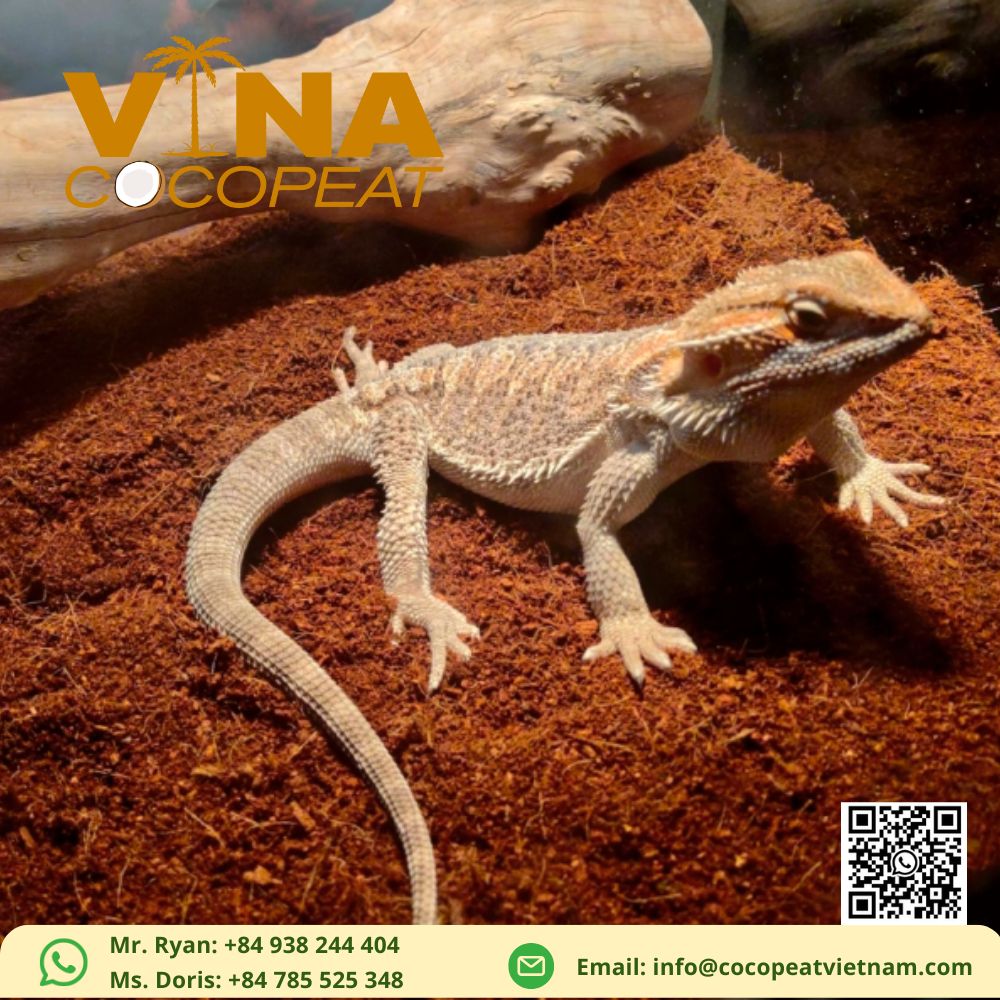
- Sustainable Agriculture
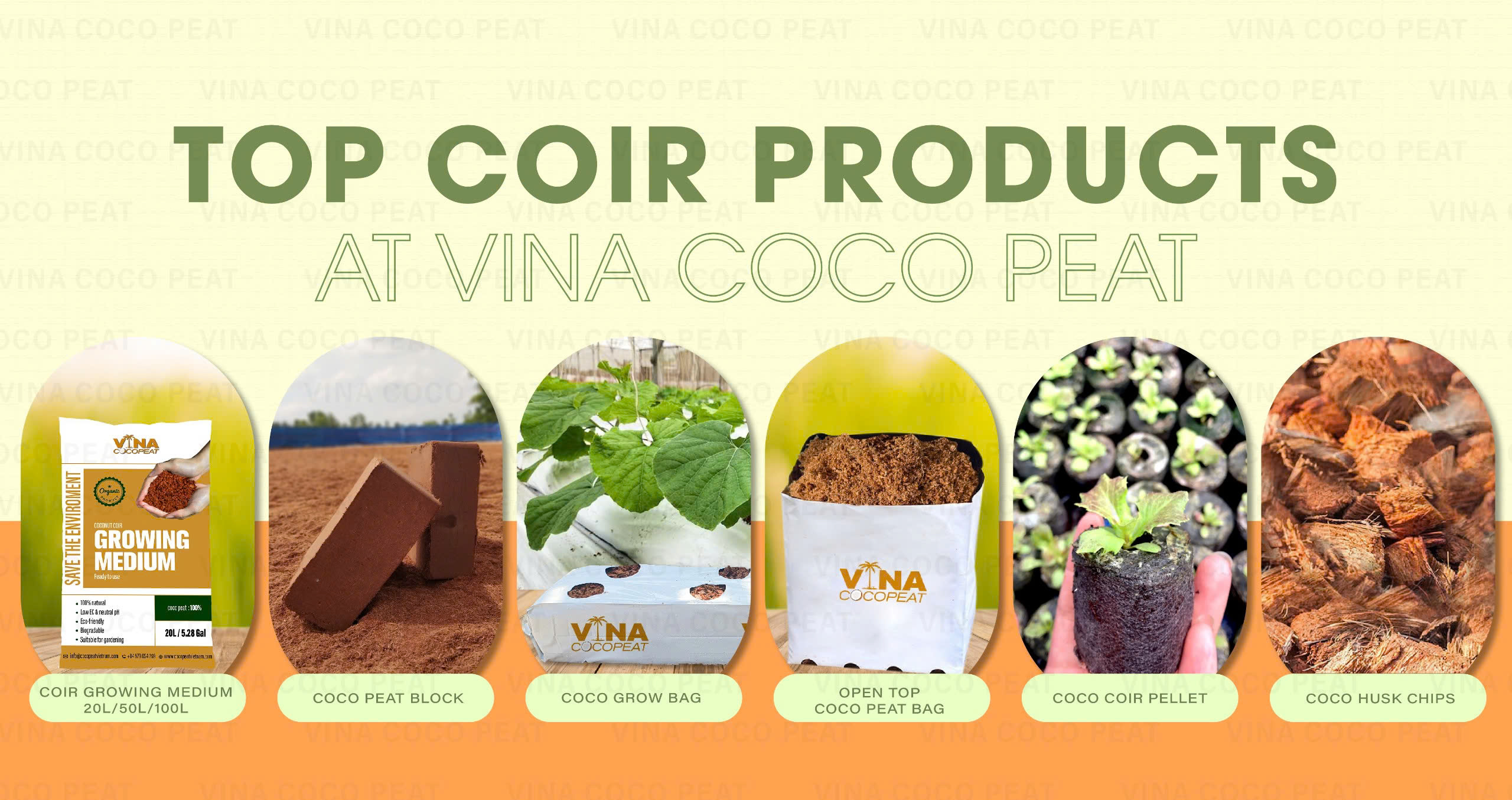
Cocopeat offers a sustainable and versatile solution for modern agriculture, utilizing coconut husks for various farming applications. It promotes healthier crops, preserves resources, and nourishes a growing global population. Cocopeat also provides a better soil for plant nutrition, leading to business expansion and trust with valued clients.
Feel free to contact with our desicated sales team. We are online 24/7 to server customer.
Ms. Doris: +84 785 525 348 (ZALO, WHATSAPP, WECHAT, LINE)
Mr. Ryan: +84 961 071 137 (ZALO, WHATSAPP, WECHAT)
한국어 담당자: 0364775030 | Kakaotalk ID: COCOHITECH
中文: +84 397 317 401 (Ms. Vi)
Email: info@cocopeatvietnam.com – www.cocopeatvietnam.com
